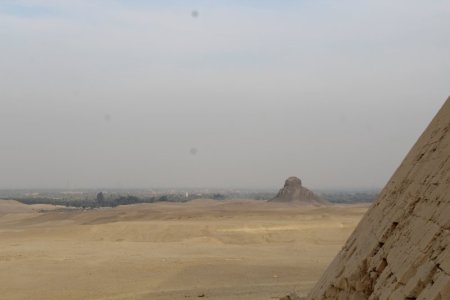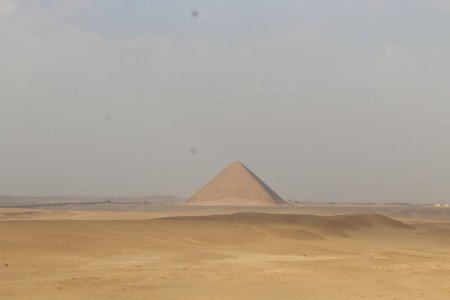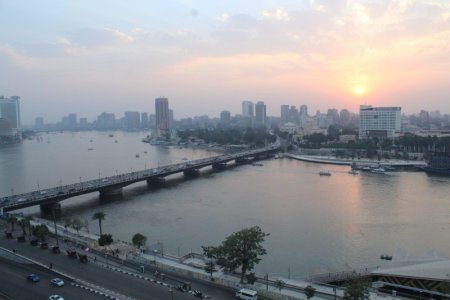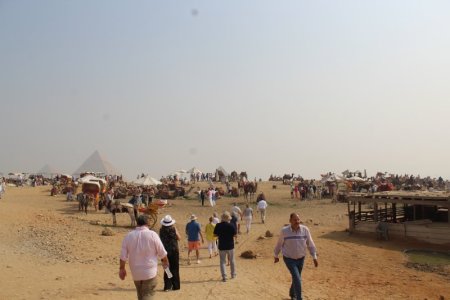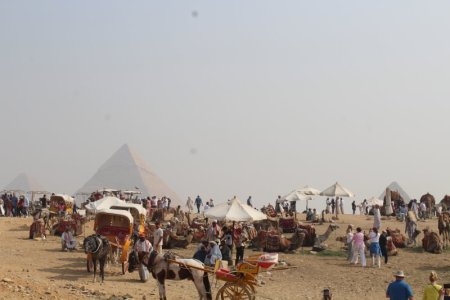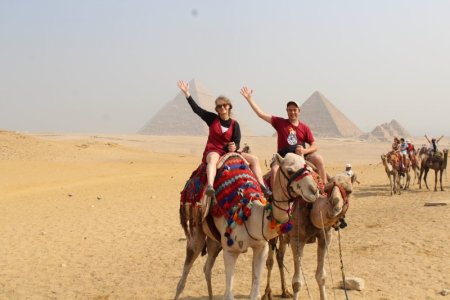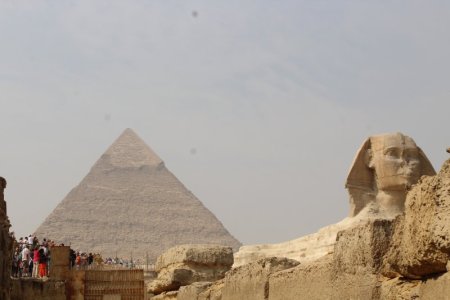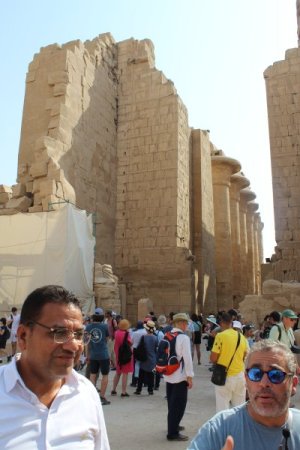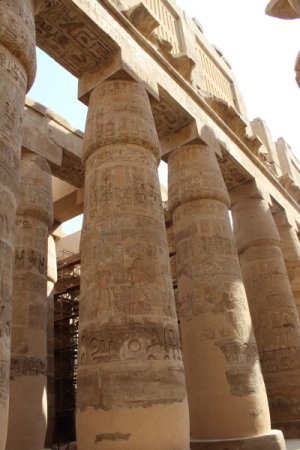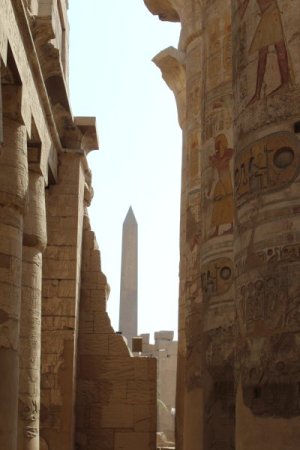- Joined
- Jan 7, 2005
- Messages
- 704
We just returned from the National Geographic expedition, “Egypt: Ancient Wonders and the Legendary Nile,” October 26-November 5th. I haven’t found any previous trip reports for this expedition or the ABD version and wanted to share our experiences to both help those who are considering this trip as well as those already confirmed that may want to know more of what they are getting themselves into before their trip begins. Hopefully it is OK to include this report in this forum.
Let me start by giving a little information about DW Karen and me. This was our first group travel experience. We prefer doing our own travel planning and execution, but we did not think that a DIY Egypt trip would be a great idea. We approached this trip as a bucket-list vacation, wanting the experience of seeing the pyramids in person, rather than having a long-standing and/or deep-seated fascination with Egypt and its culture and history. Finally, I’m an introvert (Karen less so), so I approached the group-travel aspect with some trepidation.
Once we decided on a group-travel Egypt vacation, we debated between using National Geographic or ABD. Both were pricing the same at that time ($8K per person, plus internal flights, which has increased $1K per person since last year), but National Geographic included more meals and an expert, whereas ABD always includes what I call “arts and crafts” experiences that don’t particularly appeal to either of us. We chose the end of October both because the weather in Egypt becomes more manageable later in the year and also because we thought it would be fun to spend Halloween in Egypt. We have always used our Dreams Unlimited travel agent Kelsie to book our DCL trips, and Kelsie booked our National Geographic trip. Unlike Disney trips, however, you can’t use Disney gift cards to pay for National Geographic expeditions. In addition to receiving an early booking discount, we also received a further discount from Dreams Unlimited.
Trip Planning
Even though National Geographic does the planning, there are still a few things that you have to do yourself. Receiving a typhoid vaccine was recommended for travel to Egypt, and even though our insurance didn’t cover it, we both decided that it was better to be safe than sorry. Like almost all of the other travelers, I would end up coming down with a few illnesses, but typhoid wasn’t one of them.
They send a recommended packing list well in advance of the trip. They recommend insect repellant, which we never ended up using. While there was an almost constant abundance of annoying flies, we didn’t encounter mosquitoes, or at least enough of them to justify using DEET. Bringing Immodium and some form of NSAID (I prefer naproxen), as they suggested, was essential. I also wished that I brought more wipes.
It was very hot in Egypt, and many people of both genders were wearing shorts. Even though this is a Muslim country, the appearance of the tourists was pretty much the same as you would find anywhere in Europe or at a Disney park, for that matter.
We did not exchange any money in advance. My bank allows refunds ATM fees, so I withdrew about $100 from an ATM at the airport. The amount of cash received was a huge number of bills. The easiest way to convert Egyptian pounds to dollars is to move the decimal point over by one and then take a third, so I received about 3000 Egyptian pounds for $100 USD. The bills came in all 50’s and 100’s. However, you can just bring dollars with you. It helps to have small denominations. Almost everyone was accepting dollars and Euros, and in fact, when faced with a choice between the dollars or the Egyptian pound, the price was usually cheaper if you paid in dollars. However, it was convenient to tip using a 50 Egyptian pound note.
National Geographic asks that you only bring two pieces of checked luggage. Included in the swag that they send you ahead of time are two bright yellow belts with the National Geographic logo which you strap around your luggage to identify them as luggage for guests on the tour. Because we went to Amsterdam for five days before going to Egypt, where the weather could not have been any different, there was no way that we were going to bring only two checked bags. However, because the trip began and ended at the Ritz in Cairo, we were able to leave behind a suitcase of dirty luggage so that when we left for the internal flights, we were only checking two bags.
Don’t forget to bring outlet adapters with the conventional European two-circular-prong plug. The Ritz had USB-B ports on the desk but not near the beds. M/S Farah had one adapter. However, there were no USB-C outlets to accommodate iPhone 15s. The Steigenberger had only local outlets, so if you did not bring your own adapter, you would not have been able to charge your phone, unless the hotel had one it provides upon request.
Rest assured that whatever time you arrive and whatever time you depart, your airport transfer is included. Our group began and ended with Rami, someone who exuded local hospitality and who provided a white-glove treatment which included submitting visas upon entry and completing immigration forms upon departure. His smile could not have been more genuine.
While the trip is billed as eleven days, it is really nine days of activity. We arrived from Amsterdam around 10 pm on what was called day one (no meals are included) and left with another couple at 2 AM on day 11, missing only the included breakfast. Many guests arrived one or even two days early, booking a couple of extra nights at the Ritz, whereas nobody booked any extra nights at the end of the trip. There were some people who had booked the Jordan extension, but that was cancelled due to the war.
Finally, a word on whether safety concerns should impact your trip to Egypt. In the words of our expert, William “Bill” Saturno, “If you base going to Egypt on peace in Israel, you’ll never visit Egypt.” You would never have known there was a war going on some 250 miles from Cairo.
Next installment: Day 1, Arriving in Cairo, and Day 2, Touring Şaqqārah and Dahshūr.
Let me start by giving a little information about DW Karen and me. This was our first group travel experience. We prefer doing our own travel planning and execution, but we did not think that a DIY Egypt trip would be a great idea. We approached this trip as a bucket-list vacation, wanting the experience of seeing the pyramids in person, rather than having a long-standing and/or deep-seated fascination with Egypt and its culture and history. Finally, I’m an introvert (Karen less so), so I approached the group-travel aspect with some trepidation.
Once we decided on a group-travel Egypt vacation, we debated between using National Geographic or ABD. Both were pricing the same at that time ($8K per person, plus internal flights, which has increased $1K per person since last year), but National Geographic included more meals and an expert, whereas ABD always includes what I call “arts and crafts” experiences that don’t particularly appeal to either of us. We chose the end of October both because the weather in Egypt becomes more manageable later in the year and also because we thought it would be fun to spend Halloween in Egypt. We have always used our Dreams Unlimited travel agent Kelsie to book our DCL trips, and Kelsie booked our National Geographic trip. Unlike Disney trips, however, you can’t use Disney gift cards to pay for National Geographic expeditions. In addition to receiving an early booking discount, we also received a further discount from Dreams Unlimited.
Trip Planning
Even though National Geographic does the planning, there are still a few things that you have to do yourself. Receiving a typhoid vaccine was recommended for travel to Egypt, and even though our insurance didn’t cover it, we both decided that it was better to be safe than sorry. Like almost all of the other travelers, I would end up coming down with a few illnesses, but typhoid wasn’t one of them.
They send a recommended packing list well in advance of the trip. They recommend insect repellant, which we never ended up using. While there was an almost constant abundance of annoying flies, we didn’t encounter mosquitoes, or at least enough of them to justify using DEET. Bringing Immodium and some form of NSAID (I prefer naproxen), as they suggested, was essential. I also wished that I brought more wipes.
It was very hot in Egypt, and many people of both genders were wearing shorts. Even though this is a Muslim country, the appearance of the tourists was pretty much the same as you would find anywhere in Europe or at a Disney park, for that matter.
We did not exchange any money in advance. My bank allows refunds ATM fees, so I withdrew about $100 from an ATM at the airport. The amount of cash received was a huge number of bills. The easiest way to convert Egyptian pounds to dollars is to move the decimal point over by one and then take a third, so I received about 3000 Egyptian pounds for $100 USD. The bills came in all 50’s and 100’s. However, you can just bring dollars with you. It helps to have small denominations. Almost everyone was accepting dollars and Euros, and in fact, when faced with a choice between the dollars or the Egyptian pound, the price was usually cheaper if you paid in dollars. However, it was convenient to tip using a 50 Egyptian pound note.
National Geographic asks that you only bring two pieces of checked luggage. Included in the swag that they send you ahead of time are two bright yellow belts with the National Geographic logo which you strap around your luggage to identify them as luggage for guests on the tour. Because we went to Amsterdam for five days before going to Egypt, where the weather could not have been any different, there was no way that we were going to bring only two checked bags. However, because the trip began and ended at the Ritz in Cairo, we were able to leave behind a suitcase of dirty luggage so that when we left for the internal flights, we were only checking two bags.
Don’t forget to bring outlet adapters with the conventional European two-circular-prong plug. The Ritz had USB-B ports on the desk but not near the beds. M/S Farah had one adapter. However, there were no USB-C outlets to accommodate iPhone 15s. The Steigenberger had only local outlets, so if you did not bring your own adapter, you would not have been able to charge your phone, unless the hotel had one it provides upon request.
Rest assured that whatever time you arrive and whatever time you depart, your airport transfer is included. Our group began and ended with Rami, someone who exuded local hospitality and who provided a white-glove treatment which included submitting visas upon entry and completing immigration forms upon departure. His smile could not have been more genuine.
While the trip is billed as eleven days, it is really nine days of activity. We arrived from Amsterdam around 10 pm on what was called day one (no meals are included) and left with another couple at 2 AM on day 11, missing only the included breakfast. Many guests arrived one or even two days early, booking a couple of extra nights at the Ritz, whereas nobody booked any extra nights at the end of the trip. There were some people who had booked the Jordan extension, but that was cancelled due to the war.
Finally, a word on whether safety concerns should impact your trip to Egypt. In the words of our expert, William “Bill” Saturno, “If you base going to Egypt on peace in Israel, you’ll never visit Egypt.” You would never have known there was a war going on some 250 miles from Cairo.
Next installment: Day 1, Arriving in Cairo, and Day 2, Touring Şaqqārah and Dahshūr.
